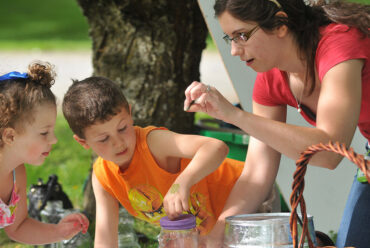Biology
Title: Unveiling the Wonders of Cardiovascular Tissues: Exploring the Lifeline of the Human Body
Introduction: The cardiovascular system, consisting of the heart, blood vessels, and blood, serves as the lifeline of the human body, ensuring the delivery of oxygen, nutrients, and vital substances to every cell. At the core of this intricate system lies a remarkable array of cardiovascular tissues, each with its unique structure and function. In this blog post, we will embark on a journey through the captivating world of cardiovascular tissues, exploring their composition, roles, and significance in maintaining our overall health and well-being.
1. Cardiac Muscle Tissue: At the center of our cardiovascular system is the heart, an organ composed primarily of cardiac muscle tissue. Key aspects of cardiac muscle tissue include:
- Structure: Cardiac muscle tissue is striated, exhibiting alternating light and dark bands. It consists of branching cells connected by intercalated discs, allowing for synchronized contractions.
- Function: Cardiac muscle tissue is responsible for generating the force necessary to pump blood throughout the body. Its continuous and rhythmic contractions ensure an efficient circulation of oxygenated blood to the organs and tissues.
2. Arterial Tissue: Arterial tissues are found in the walls of arteries, which carry oxygenated blood away from the heart. Key features of arterial tissue include:
- Structure: Arterial tissue is composed of three layers: the inner endothelium, the middle smooth muscle layer, and the outer connective tissue layer. This layered structure allows arteries to withstand high pressure.
- Function: Arterial tissue facilitates the transportation of blood under pressure, ensuring the efficient delivery of oxygen and nutrients to various tissues and organs.
3. Venous Tissue: Venous tissues form the walls of veins, responsible for carrying deoxygenated blood back to the heart. Key characteristics of venous tissue include:
- Structure: Venous tissue has thinner walls compared to arterial tissue. It consists of an inner endothelium, a middle layer of smooth muscle, and an outer layer of connective tissue.
- Function: Venous tissue helps in the return of blood to the heart by working against gravity. It contains one-way valves that prevent the backward flow of blood, facilitating the efficient venous return.
4. Capillary Tissue: Capillary tissues are the smallest and thinnest blood vessels, forming an intricate network throughout the body. Key features of capillary tissue include:
- Structure: Capillaries are composed of a single layer of endothelial cells, facilitating the exchange of gases, nutrients, and waste products between the blood and surrounding tissues.
- Function: Capillary tissue enables the exchange of oxygen, nutrients, and waste products between the blood and surrounding cells. This exchange ensures proper nourishment and waste removal at the cellular level.
Conclusion: The cardiovascular system relies on the remarkable composition and function of various cardiovascular tissues to ensure the efficient circulation of blood throughout the body. From the rhythmic contractions of cardiac muscle tissue to the transport capabilities of arterial, venous, and capillary tissues, each component plays a vital role in maintaining our health and well-being. Understanding the structure and function of these cardiovascular tissues enables us to appreciate the intricate mechanisms that support the lifeline of our bodies. So, let’s celebrate the wonders of cardiovascular tissues and embrace the remarkable symphony that keeps us alive and thriving.
.





levaquin medication – buy dutasteride without prescription order zantac 150mg generic
Your comment is awaiting moderation.